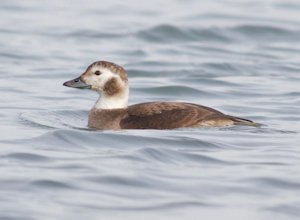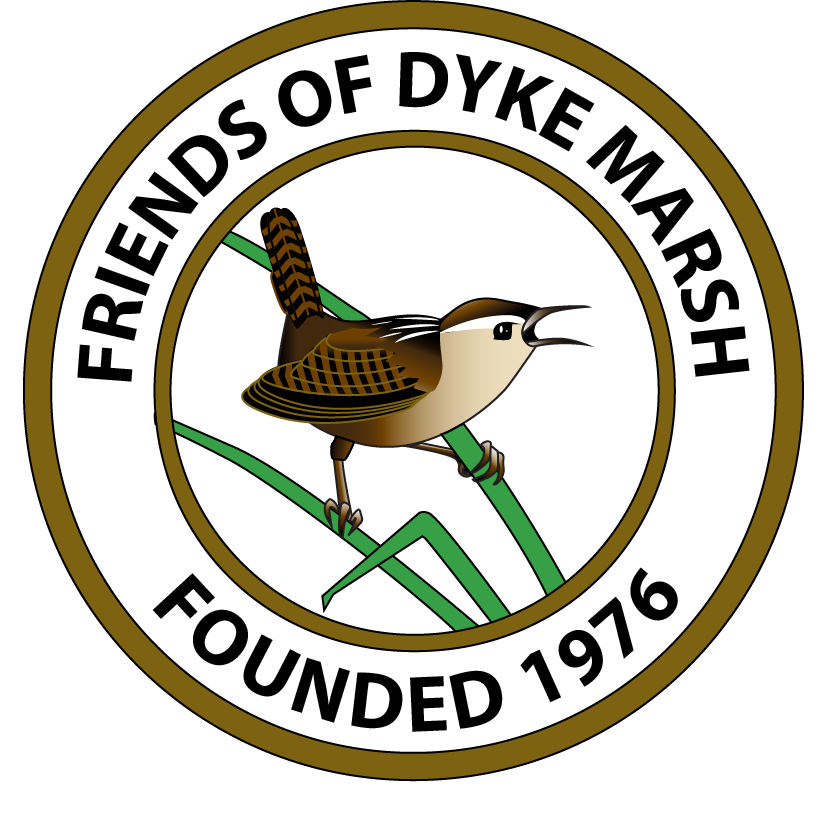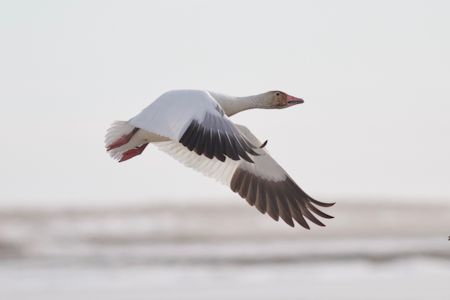Waterfowl numbers in Dyke Marsh, Hunting Creek and along the Potomac River multiply in the winter and many people love to study and identify them. Waterfowl are ducks, geese and swans, birds that require water bodies or aquatic habitats to survive. These birds have waterproof feathers, webbed feet and broad bills.
During the December 2017 Christmas Bird Count in the area, observers identified 18 species of waterfowl, including an uncommon snow goose (Chen caerulescens) and a long-tailed duck (Clangula hyemalis). Additionally, surveyors saw the diminutive cackling goose (Branta hutchinsii) during count week.
Dyke Marsh and the Hunting Creek embayment are an especially important ecosystem for migrating and overwintering waterfowl. At least 26 species of waterfowl have been identified in this area, although some species are uncommon to rare.
 Long-tailed duck (Clangula hyemalis). Photo by Ed EderWaterfowl observed here can be categorized in different groups or families. Examples:
Long-tailed duck (Clangula hyemalis). Photo by Ed EderWaterfowl observed here can be categorized in different groups or families. Examples:
- mergansers, scoters and long-tailed ducks;
- the Aythya genus of diving ducks, such as canvasback (Aythya valisineria), scaup (Aythya marila and Aythya affinis), ring-necked duck (Aythya collaris) and redheads (Aythya Americana);
- Bucephala diving ducks, like the common goldeneye (Bucephala clangula);
- the Oxyura genus or stiff-tailed ducks, like the ruddy duck (Oxyura jamaicensis);
- puddle ducks, including a large grouping of waterfowl that forage in shallower water, like the mallard (Anas platyrhynchos) and wood duck (Aix sponsa); and
- the Anser genus, which includes Canada geese (Branta canadensis), snow geese (Chen caerulescens) and less common species such as greater white-fronted (Anser albifrons) and cackling geese.
 Cackling goose (Branta hutchinsii). Photo by Ed Eder Waterfowl gravitate to Dyke Marsh and the Hunting Creek area for food and sanctuary. Mergansers -- common (Mergus serrator), hooded (Mergus merganser) and red-breasted (Lophodytes cucullatus) -- feed on fish and crayfish. Diving ducks forage for crustaceans, mollusks and the tubers of submerged aquatic vegetation (SAV) while geese and puddle ducks feed primarily on SAV. The area provides safe harbor so that waterfowl can move into adjacent feeding habitats.
Cackling goose (Branta hutchinsii). Photo by Ed Eder Waterfowl gravitate to Dyke Marsh and the Hunting Creek area for food and sanctuary. Mergansers -- common (Mergus serrator), hooded (Mergus merganser) and red-breasted (Lophodytes cucullatus) -- feed on fish and crayfish. Diving ducks forage for crustaceans, mollusks and the tubers of submerged aquatic vegetation (SAV) while geese and puddle ducks feed primarily on SAV. The area provides safe harbor so that waterfowl can move into adjacent feeding habitats.
During mid- to late December, total waterfowl population numbers can reach several thousand with Canada geese and mallards usually predominating, but occasionally rafts of scaup can reach into the thousands.
Waterfowl migration northward usually begins in February with large rafts of waterfowl staging in the Potomac often at concentration points if river ice restricts their assemblies.


